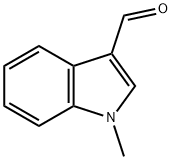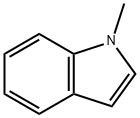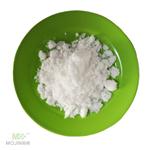Chemical Properties
light yellow to orange or brown crystalline powder
Uses
Reactant for preparation of nitroolefins and β-nitroalcohols via microwave- or ultrasound-assisted Henry reactions Reactant for synthesis of quinolinones via three-component Ugi reaction Reactant for synthesis of α-ketoamides as inhibitors of Dengue virus protease with antiviral activity in cell-culture Reactant for preparation of thiazolopyrimidinones as inhibitors of Bcl-2 proteins Reactant for preparation of vinylindoles via Peterson olefination or olefination with Nysted reagent Reactant for preparation of indolyl alkenes from microwave-enhanced Knoevenagel condensation as antibacterial agents.
Uses
1-Methylindole-3-carboxaldehyde is used as a reactant for preparation of nitroolefins and β-nitroalcohols via microwave- or ultrasound-assisted Henry reactions, reactant for synthesis of quinolinones via three-component Ugi reaction, reactant for synthesis of α-ketoamides as inhibitors of Dengue virus protease with antiviral activity in cell-culture, reactant for preparation of thiazolopyrimidinones as inhibitors of Bcl-2 proteins, reactant for preparation of vinylindoles via Peterson olefination or olefination with Nysted reagent, reactant for preparation of indolyl alkenes from microwave-enhanced Knoevenagel condensation as antibacterial agents 1-Methylindole-3-carboxaldehyde may be used in the synthesis of (Z)-3-(1-methyl-1H-indol-3-yl)-2-(thiophen-3-yl)acrylonitrile, via base-catalyzed condensation with thiophene-3-acetonitrile. It was also used in the preparation of monomer, required for the synthesis of poly(3-vinyl-1-methylindole).
General Description
1-Methylindole-3-carboxaldehyde is a heterocyclic indole aldehyde. 1-Methylindole-3-carboxaldehyde on condensation with 2-hydroxybenzohydrazide yields Schiff base.





